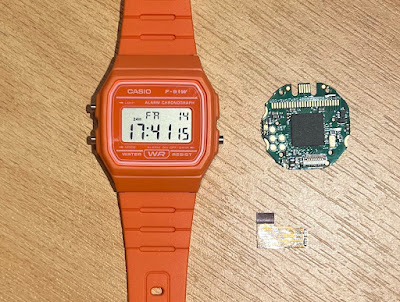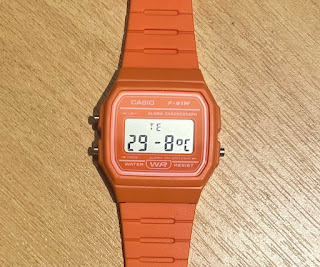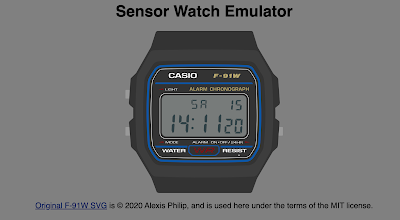

John Graham-Cumming's blog
source link: https://blog.jgc.org/2022/10/pimping-my-casio-with-oddly-specific.html
Go to the source link to view the article. You can view the picture content, updated content and better typesetting reading experience. If the link is broken, please click the button below to view the snapshot at that time.

Pimping my Casio with Oddly Specific Objects' alternate motherboard and firmware
Pimping my Casio with Oddly Specific Objects' alternate motherboard and firmware
Some time ago I bought a replacement motherboard for my classic Casio F-91W from Crowd Supply. The project keeps the original Casio LCD but replaces the entire motherboard with a modern microcontroller and open firmware. The combination gives you long battery life but lots of new functionality in a classic case.
Here's my Casio before working on it. Next to it is the new motherboard and the tiny sensor module which has a thermometer on it. With it the Casio can show the current temperature. It's separate because the watch is intended to be hackable by allowing anyone to create a pluggable sensor module.
At the top of the motherboard you can see a tiny USB connector (it's micro USB Type B) which is how new firmware gets flashed onto the device. More on that below.
The first step is to remove the back of the watch with a small screwdriver.
At this point the entire module can be carefully removed.
Two things are needed next. The springy battery connector needs to be removed from the old motherboard; it pops off easily. And a little part needs to be unsoldered and re-soldered onto the next motherboard. Again, watch the video above for details of the soldering operation. I marked in the picture below where the little part was on the old motherboard and where it ended up.
After that it's a small matter of putting it all back together. Once you've done that you'll have the basic set of functionality from the Movement firmware. Here's my completed watch showing the temperature: 29.8C. Yes, it was warm that evening.
Changing the firmware
- Removed Fahrenheit
- Removed 12 hour clock
- Made the sequence of watch faces be clock, countdown timer, stopwatch, pulsometer, temperature, temperature log, sunrise/sunset, preferences, set time.
Building and testing the firmware
Copying to the watch
Recommend
About Joyk
Aggregate valuable and interesting links.
Joyk means Joy of geeK









